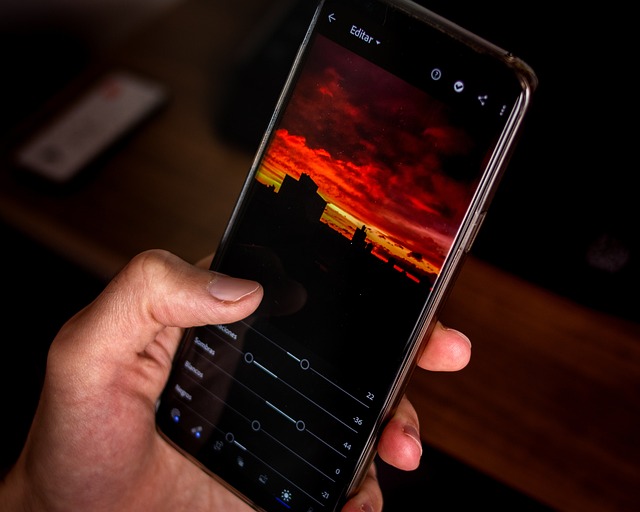With the rise of smartphones, capturing moments has never been easier. But it’s not just about taking photos; it’s refining them. Editing on mobiles transforms good shots into great ones. This guide offers simple, effective techniques to elevate your mobile images. Whether you’re a beginner or a seasoned photographer looking for a refresher, dive in to get the best from your mobile edits.
Why Mobile Editing?
Today, mobile devices have not only transformed how we communicate but also how we capture and refine memories. Once deemed inferior for serious photography, smartphones have evolved into formidable cameras, rivaling dedicated devices in many scenarios.
When a moment arises, it’s often our mobiles we reach for. Their convenience is unparalleled, and the ability to instantly edit on the same device enhances this. Imagine the scene: You’ve captured a spontaneous sunset or a candid smile, and within minutes, you can tweak contrasts, crop for effect, or even add text to a picture to convey a message.
Transferring files to a computer for editing is becoming a thing of the past. Modern mobile editing tools are sophisticated, offering a range of functionalities that once required bulky software. The leap in technology is not just about quality but accessibility. No longer is photo editing a reserved domain for those with expensive software. Now, everyone can mold their captured moments to perfection, all from the palm of their hand.
Getting the Most Out of Your Smartphone Camera
Smartphone cameras have become powerhouses in photography. Their compact nature, combined with advancing technology, offers capabilities that sometimes even surpass traditional cameras. To maximize their potential, understanding and harnessing these features is crucial.
Firstly, focus on the basics: stability and framing. A steady hand reduces blur; for trickier shots, consider using a mobile tripod. Composition matters; adhere to the rule of thirds, positioning key subjects off-center for more dynamic photos.
Lighting is pivotal. The golden hours, shortly after sunrise and before sunset, provide soft, diffused light, ideal for most subjects. If shooting in a harsh midday sun, use natural shadows or the phone’s HDR mode to balance exposures.
Explore the camera’s manual mode, if available. Adjusting settings like ISO, shutter speed, and white balance gives greater control over the outcome. For action shots, use burst mode. It quickly captures several frames, ensuring you don’t miss that perfect moment.
Lastly, don’t rely solely on the rear camera. Often used for selfies, the front camera can offer a fresh perspective for certain subjects. Remember, the best camera is the one you have with you. By understanding its features and potential, your smartphone can produce truly stunning images
The Best Photo Editing Techniques
Editing is as essential as capturing and turning ordinary shots into captivating visuals. To transform your photos effectively, here are some top techniques:
- Cropping and Composition. Reshape your image to focus on the subject. Removing distractions and adhering to the rule of thirds can dramatically alter the impact of a photo.
- Color Adjustment. Balance the brightness, contrast, and saturation to ensure your photo appears natural yet vibrant. Tailored adjustments can evoke specific moods, be it the warm tones of a sunset or the cool shades of a winter morning.
- Sharpening. Enhance the clarity of your image. A slight increase in sharpness can bring out details, but be wary of overdoing it, as it can introduce noise.
- Selective Focus. Blur out parts of the image to draw attention to a specific subject. This can simulate depth of field or give a tilt-shift effect, making subjects pop.
Mastering these techniques will set your photos apart. While photo editing tools vary, the underlying principles remain constant. Harness them, and elevate your photographic game.
The Art of Filters and Presets
Filters and presets have revolutionized the way we approach photo editing. Rather than individually adjusting parameters, these tools offer a shortcut, instantly transforming an image’s vibe.
Filters apply a set of predefined adjustments, imbuing photos with specific tones or moods. Filters quickly reshape visual narratives, whether it’s a vintage sepia, a moody noir, or a vibrant summer glow.
Presets, often used in advanced editing software, are customizable. They store a series of adjustments that photographers can create, save, and apply across various photos. This ensures consistency, especially for maintaining a cohesive theme across a portfolio or social media feed.
While filters and presets speed up the editing process, discretion is key. Over-reliance can result in images looking overprocessed. It’s about striking a balance: using these tools to enhance, not overshadow, the original capture. When used judiciously, they can elevate a good photo to a great one, saving time and bringing a professional touch to your edits.
Conclusion
Mobile photo editing has opened doors to instant creativity and professional-level refinement accessible to everyone. While the tools and techniques evolve, the core remains: enhancing visuals to tell a story. Remember, a photo captures a moment, but editing defines its essence. So, explore, experiment, and elevate each shot to its fullest potential.

0 Comments